10 best eCommerce platforms for creating an online store
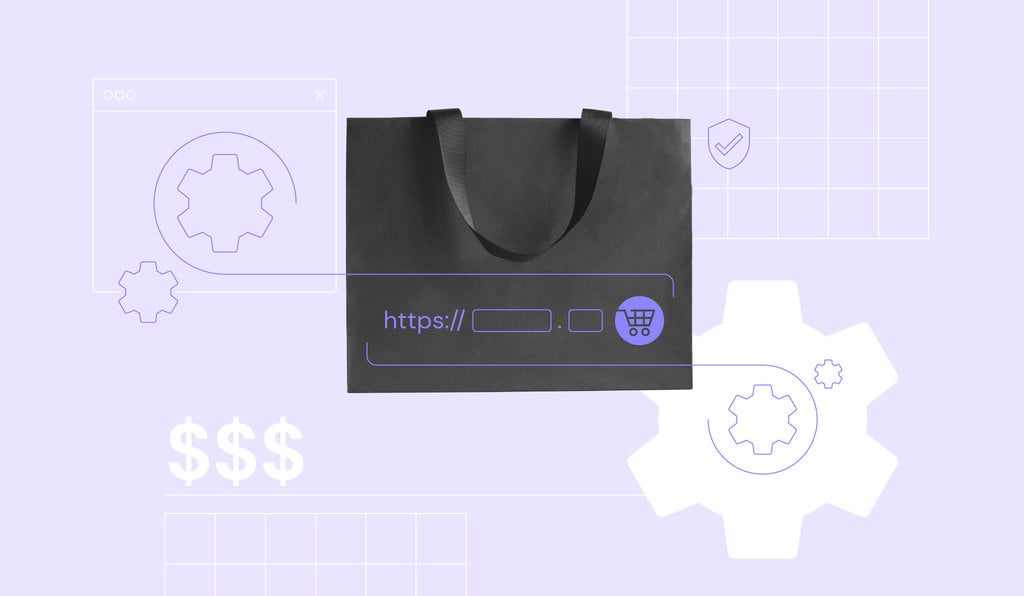
The fast growth of the eCommerce industry is encouraging more people to start the online businesses of their dreams.
However, many hesitate because they think the process is complicated. Enter the eCommerce platform, a tool that simplifies web development for all skill levels!
As there are many options to choose from, starting your search for the right one can be challenging.
If you’re also facing this problem, keep reading as we explore the ten best eCommerce platforms to create an online store. Discover each platform’s key features, pricing, and benefits to make an informed choice.
Quick overview of the best eCommerce platforms
If you’re short on time, here’s a recap of the top eCommerce platforms in this article. Keep in mind that transaction fees here are charged by the eCommerce platform and don’t include processing fees from third-party payment gateways.
| eCommerce Platform | Best For | Pricing | Transaction Fees |
| WooCommerce | WordPress users, people seeking customization flexibility | Free | 2.9% + $0.30 per local transaction for U.S.-issued cards with WooPayments |
| Hostinger Website Builder | Beginners, users wanting to launch their online store quickly | RM12.99/month | None |
| Magento Open Source | Tech-savvy users, business owners wanting to scale up for enterprise-level sales | Free | None |
| Shopify | Beginners, stores with an offline presence | $29-2,300/month | Depends on the pricing plan |
| Ecwid | Tech-savvy users, businesses selling across multiple channels | Free-$89/month | None |
| BigCommerce | Medium to large businesses with numerous staff members | $29-299/month | None |
| Big Cartel | Artists and artisans selling physical and digital art | Free-$24/month | None |
| Square Online | Small to medium businesses with an offline presence | Free-$79/month | Starts at 2.9% + $0.30 per online transaction and 2.6% + $0.10 for in-person transaction |
| OpenCart | Users selling globally, establishing an affiliate program. | Free | None for the open-source version, $59-199/month with OpenCart Cloud |
| Sellfy | Creators, artists, digital product sellers | $22-119/month | None |
10 best eCommerce platforms
We have tested numerous eCommerce platforms and narrowed them to the top 10 for starting an online business.
Other than functionality and pricing, we evaluated each platform’s speed optimization to ensure fast website loading for optimal customer experience and conversion rates.
To do this, we tested websites built with each eCommerce platform using GTmetrix, a popular website speed-testing tool. Most operate in Europe or the US, so we ran tests on the Singapore server to assess their platform’s optimization for global traffic.
Key parameters we considered include page load time, the total time the page takes to load fully, and the Largest Contentful Paint (LCP), which measures the time for the most extensive content element in the viewport to become visible.
1. WooCommerce ‒ a highly scalable platform for all business types
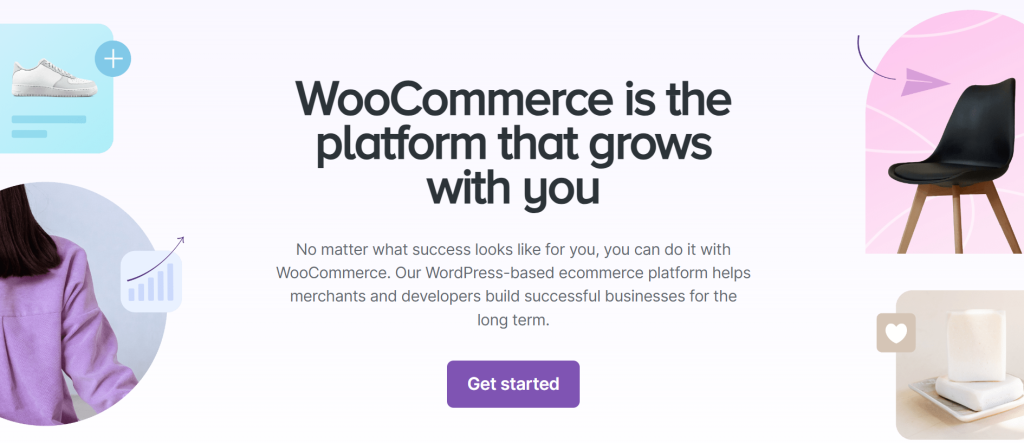
WooCommerce is the go-to choice for business owners who value flexibility in customization. This popular plugin lets you turn an existing WordPress site into an eCommerce store.
After activating WooCommerce, you can start selling out of the gate using its built-in eCommerce features, such as inventory management, payment processing, and shipping options.
For stores with specific needs, WooCommerce offers hundreds of extensions for different business types and sizes at varying prices. You can also scale your eCommerce business with help from other WordPress eCommerce plugins, each bringing its own separate customization settings and support teams.
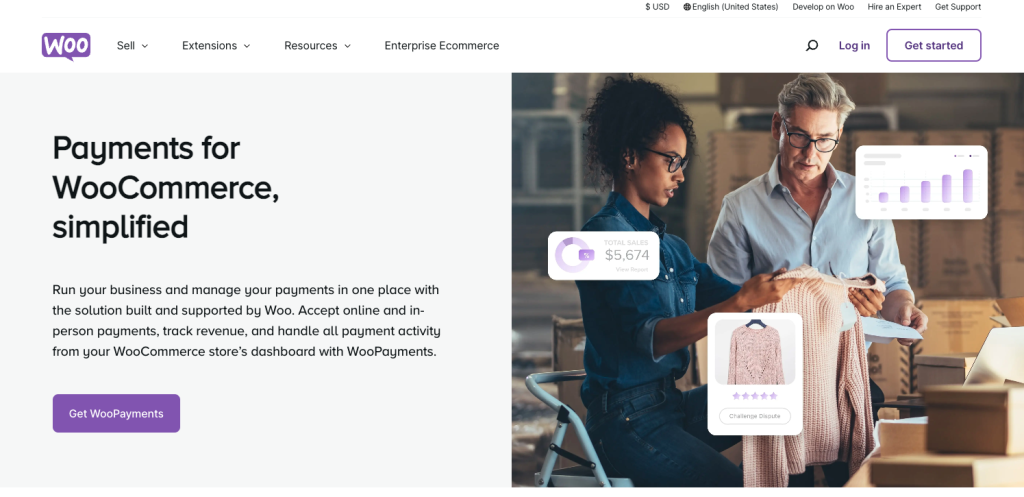
WooCommerce’s built-in payment solution, WooPayments, allows stores to process credit and debit card payments and integrates with local payment methods. It’s free, but the payment extension charges 2.9% + $0.30 per local transaction for U.S.-issued cards.
A WooCommerce store’s appearance can be customized as much as its functionality. Feel free to browse the WordPress official directory for free themes or buy a premium one from third-party marketplaces like ThemeForest and Envato. Our top WooCommerce themes narrow them down for a quick start.
However, since WooCommerce and WordPress are community-driven, neither platform offers dedicated support. Luckily, many online resources can help you troubleshoot and enhance website performance.
As a self-hosted platform, WooCommerce heavily depends on the web host. Our tests showed an average total load time of 7.3 seconds and an LCP of 3.6 seconds. In comparison, three sites hosted with Hostinger averaged a page load time of 3.6 seconds and an LCP of 1.3 seconds.
Pros
- Extensive themes. WooCommerce is compatible with WordPress’ extensive official and third-party theme catalog. You can even hire a WordPress developer to design a custom theme tailored to your needs.
- Extremely scalable. WordPress is a self-hosted solution, meaning users can choose a hosting provider. Expanding website functionality is also made simple with WooCommerce’s massive selection of plugins. See our best WooCommerce plugins to better understand the platform’s scalability.
- SEO-friendly. WooCommerce offers SEO features through WordPress, boosting your website’s visibility on search engines more easily.
Cons
- Steep learning curve. Setting up and managing a WooCommerce online store can be challenging for users new to WordPress. However, you can mitigate this hurdle with managed WooCommerce hosting. Many video and text-based tutorials are also available for self-assistance.
- Self-maintenance. Since WordPress is self-hosted, you’re responsible for updating WordPress core, plugins, and themes.
Pricing
WooCommerce is free to install, making it highly accessible to small businesses. However, your WordPress site needs a domain name and web hosting to run. Be mindful when choosing a web host, as it can impact WooCommerce’s performance.
As a web hosting provider recommended by WordPress.org, we curate our managed WooCommerce hosting plans for optimal performance and ease of use. Starting at RM12.99/month, you get a one-click WooCommerce setup, a free domain name, a content delivery network (CDN) for faster performance, and a 99.9% uptime guarantee.
All plans include automatic daily backups to keep your data safe, WordPress auto-updates, a vulnerability scanner for security, and a staging tool for risk-free testing. These plans also provide access to AI features that simplify content creation, troubleshooting, and site management.
Take advantage of our 30-day money-back guarantee to see if we’re the right web host for your business.
Other potential expenses to consider when budgeting include premium themes and plugins. Check out our guide for a full breakdown of WordPress pricing.
Verdict
WooCommerce’s abundant customization options make it a versatile eCommerce solution for all business types and sizes. While it may not be the easiest one on the market, our WooCommerce tutorial can help beginners navigate this affordable yet powerful eCommerce platform.

2. Hostinger Website Builder ‒ an AI-powered site builder for quick online store setup

Hostinger Website Builder caters to business owners who wish to build an eCommerce website quickly and easily.
It offers an intuitive drag-and-drop builder and a vast selection of site elements, making it one of the best eCommerce website builders for beginners.
The AI onboarding flow simplifies website building for different purposes, such as online stores. In seconds, you can get a personalized website with relevant images and copy for your brand and goals.
If you identify areas for improvement, simply customize the website further using our hassle-free visual builder.
Alternatively, use our responsive, designer-made website templates as a starting point. All templates have on-page features tailored to their niche to assist your search engine optimization (SEO) efforts.
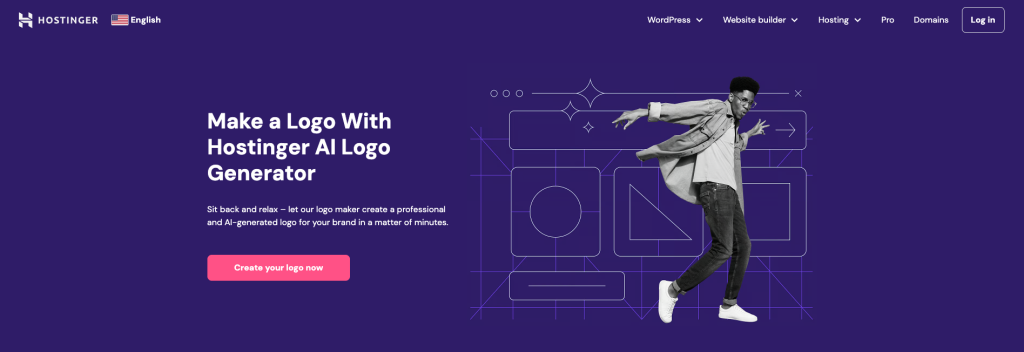
Hostinger Website Builder offers AI-based tools to streamline various branding and marketing tasks. The builder can create product titles, subtitles, and descriptions from uploaded images, saving time.
Separate tools for designing a logo and creating unique blog content also exist, eliminating the need to hire a professional.
Once your online store is up and running, take advantage of Hostinger’s built-in marketing tools to gain traction. The builder supports Google Analytics for tracking performance and campaigns, Facebook Pixel for targeted marketing, and WhatsApp for customer inquiries.
Performance-wise, the eCommerce platform’s built-in speed optimization techniques effectively ensure fast load times. The three websites we tested averaged an LCP of 1.8 seconds and a full load time of 2.5 seconds. All of them scored B in GTmetrix.
Hostinger offers 24/7 assistance via live chat and email. Written and visual learning materials are also available on the Hostinger Tutorials page and Hostinger Academy YouTube channel for self-assistance.
Pros
- AI-driven website creation. Build niche eCommerce sites within seconds by describing the idea in text or voice prompts for accessibility.
- AI customization tools. Create a brand logo, unique visuals, engaging content, and user behavior predictions in one integrated environment. For further convenience, the builder includes AI tools for creating product pages and editing images.
- Intuitive builder. The drag-and-drop functionality and grid layout simplify customization for users who don’t want to rely on AI. Choose from over 150 designer-made templates as your base design.
Cons
- No free plan available. Despite this, new users have a seven-day free trial and a 30-day money-back guarantee to test the builder’s features.
- Limited integrations. The builder offers more built-in features than third-party integrations.
Pricing
Hostinger includes the site builder with its hosting plans by default. The Business plan, costing RM12.99/month, offers eCommerce features for selling up to 500 products. Upgrade to higher hosting plans for additional features and server resources as your online store grows to anticipate increased traffic.
Hostinger Website Builder plans include a free domain name, website templates, 24/7 customer support, and a 30-day money-back guarantee for risk-free testing.
The builder doesn’t charge transaction fees; you only cover the payment processor’s fee. In addition, over 20 payment methods are available to accommodate global customers.
Verdict
Hostinger Website Builder simplifies online store setup for beginners. Tech-savvy users can also save time and energy using this builder, streamlining website creation and maintenance using AI tools.
With reasonable pricing and reliable performance, it’s a budget-friendly option for those looking to start their online business journey.
3. Magento ‒ a powerful open-source eCommerce platform for B2C and B2B businesses

Magento is an excellent choice for businesses looking to scale their sales. It comes in three versions ‒ Magento 2, Adobe Commerce, and Adobe Managed Services. This review will focus on Magento 2, the open-source eCommerce solution suitable for all business sizes.
Sellers offering a wide range of products can benefit from Magento’s powerful catalog management system. It allows for listing an unlimited number of products and eases organization tasks with product grouping and categorization.
The inventory system has concurrent checkout protection to prevent stock discrepancies when multiple customers check out the same product. You can set different pricing rules and coupons to boost upselling and cross-selling.
Magento provides powerful multi-store features to simplify large-scale site management tasks. Users can manage multiple stores from the same admin panel.
Its built-in content management system (CMS) simplifies content organization, while user role management lets you assign permissions to streamline administrative tasks.
To improve the shopping experience, Magento offers Remote Shopping Assistance for personalized support. When customers need help with their order, you can log in as them to resolve issues or talk to them in real-time via live chat or video call. The video call feature also includes screen-sharing functionality.
As a self-hosted solution, Magento’s performance depends mainly on web hosting. Our tests on three websites showed fluctuating load times between 5 and 11 seconds. Interestingly, the average LCP was 1.2 seconds. Choosing the right hosting can improve a Magento site’s performance.
Pros
- B2B functionality. Integrate with customer relationship management (CRM) systems to enhance marketing strategies, create custom catalogs for different companies, and manage quote requests with built-in features.
- Advanced search engine optimization. Modify URL paths to make them more user-friendly, add meta descriptions for products and pages, and auto-generate your sitemap to boost search engine rankings.
- Extensive analytics and reporting tools. Gain insights on sales, taxes, search terms, total invoiced and refunded sales, and other critical metrics for improved decision-making.
Cons
- Limited customer support. Free users must rely on the platform’s knowledge base, documentation, and community forums for help.
- Steep learning curve. Installation and customization require technical expertise. See our Magento tutorial to learn how the platform works.
Pricing
Despite being free, you need to host Magento on a reliable virtual private server (VPS) or dedicated server for optimal performance.
Hostinger’s Magento VPS hosting plans streamline this platform’s setup process and maintenance with a VPS template and Kodee AI assistant. The AI tool also helps troubleshoot and configure, reducing beginners’ learning curve.
Starting at RM23.99/month, our hosting plans also come with scalable resources for optimal performance, free real-time snapshots for risk-free testing, and automatic weekly backups for data safety.
Additional costs include premium extensions and templates in Adobe Commerce Marketplace and third-party platforms.
Verdict
Magento is a highly customizable platform with advanced features for accommodating B2C and B2B businesses; it’s perfect for people planning to sell globally or establish an enterprise.
If you can overcome its learning curve and secure the right hosting, this eCommerce software is a great WooCommerce alternative and can significantly boost your business growth.

4. Shopify ‒ ideal for omnichannel selling

Shopify is one of the most popular eCommerce platforms for all skill levels. Its user-friendly interface and built-in eCommerce functionality help new users start selling right after buying a plan.
Designed for business entities, Shopify lets you sell unlimited products and distribute store access using collaborator accounts. It can also track inventory across multiple locations, allow multiple checkouts at the same time, and scan for tax updates.
Shopify offers a point-of-sale system compatible with most POS hardware for in-person selling. However, advanced features require Shopify POS Pro, which costs extra per location beyond the platform’s base plan.
Other notable features include customer segmentation for better retention, marketing automation, and fraud analysis with Shopify Payments.
Performance-wise, our website speed test across three Shopify sites showed an average LCP of 2.8 seconds and a full load time of 7.7 seconds.
A low LCP score of under three seconds helps visitors view critical site content quickly. However, the slow page load time can still negatively impact the overall user experience. Compress website images, turn off unused features and apps, or upgrade the plan to improve site speed.
Pros
- Abandoned cart recovery. Re-engage with customers who have added items to their carts by email.
- 24/7 support. Live chat support is available on all plans, while phone support is exclusive to Plus users.
- International selling. Customize shopping experiences and pricing strategies for different markets.
Cons
- Limited free design. Shopify only has 13 free basic templates. The cost for the paid ones starts at $100, which isn’t small business-friendly.
- Transaction fees. If you don’t use Shopify Payments, which is available only in certain countries, there’s an additional cost for using third-party payment processors. See the pricing breakdown below for details.
Pricing
Shopify has three pricing plans ranging from $29-299/month when billed annually. Companies with complex business processes can opt for the Plus plan with custom pricing starting at $2,300/month.
New users can test the platform with a three-day free trial and a $1 plan for the first month.
Additional costs include transaction fees for people not using Shopify Payments. Shopify’s lowest-tier plan, Basic, charges 2.9% + $0.30 for online credit card transactions and 2.6% + $0.10 for in-person credit card transactions. The higher your plan, the lower the fees.
For those wanting to sell in person, Shopify POS Pro costs an additional $89/month per location. Official website templates range from $140 to $400; apps start at $5/month.
Verdict
Shopify offers a comprehensive suite of robust features for various business types and sizes. However, its high starting price makes it more suitable for established businesses with larger budgets.
5. Ecwid ‒ a simple eCommerce widget for small and medium-sized businesses

If you already have a website or a social media account, you can transform it into an eCommerce site with Ecwid. Simply create an account and integrate the platform with yours to start selling online.
The widget can connect to popular online marketplaces for omnichannel selling, such as Amazon and eBay. With social platforms, you can take advantage of their automated advertising tools to turn visitors and existing following into customers.
Ecwid supports pay-what-you-want and recurring subscription pricing strategies. Accept payments via Lightspeed Payments, Ecwid’s choice of payment processor, at 2.9% + $0.30 per transaction. Alternatively, choose from over 70 third-party payment gateways in your country.
Ecwid’s App Market provides free and paid apps for scaling store functionality. If you can’t find what you need, the platform offers custom development services for an additional fee.
Free and paid users can access email support, while chat support is exclusive to the latter.
As a hosted solution, Ecwid takes care of website security, maintenance, and optimization. The three websites we tested took 4 to 14 seconds to load fully, had an LCP of around 2 seconds, and scored a C on GTmetrix.
Pros
- Automated tax invoices. Automatically generate tax invoices to send to customers or export in bulk for submission to tax authorities. Unfortunately, automated tax rates are reserved for paid users.
- Widget-based tool. Add it to an existing website or social media account to kickstart your online business journey with an established presence.
- PCI DSS and GDPR compliance. Ecwid meets the Payment Card Industry Data Security Standard requirements for handling card payments and personal data.
Cons
- Limited site builder. Despite its user-friendly interface, the point-and-click editor lacks advanced customization features. Complex changes require custom CSS code.
- One-page templates. Building an intricate website structure with a multi-level navigation system requires an additional paid app.
Pricing
Ecwid offers a free plan and three paid plans ranging from $21-89/month when billed annually. All plans include a site builder, free themes, a responsive shopping cart, and a customer management dashboard.
The free plan has limited features and doesn’t let you connect to an existing domain. Furthermore, it only allows up to five product listings.
Opt for the recommended Business plan at $39/month for abandoned cart emails, Mailchimp integration for email marketing, and advanced SEO tools. This plan lets you sell up to 2,500 products and digital products up to 25 GB per file.
Verdict
Ecwid makes adding eCommerce functionality to existing websites and social media accounts hassle-free and inexpensive. Its limited customization options make it one of the best online store platforms for beginners and people who want to avoid overburdening themselves with too many choices.
6. BigCommerce ‒ best for headless commerce and businesses with multi-location inventory
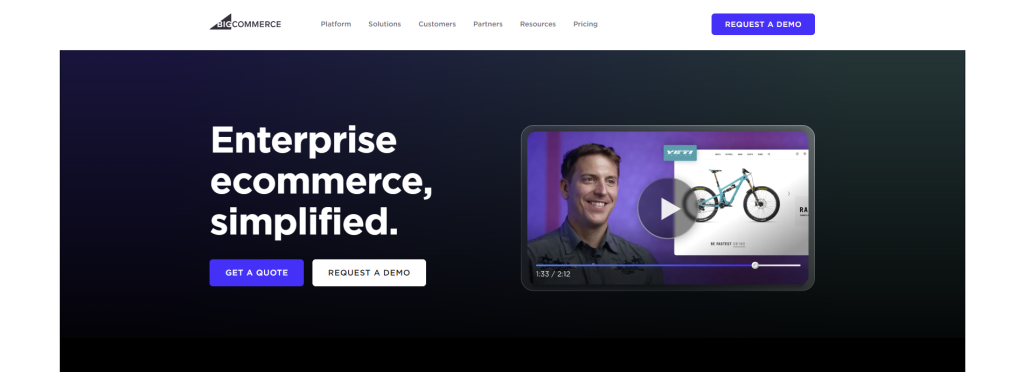
BigCommerce is a powerful eCommerce solution for businesses with complex needs or large customer bases.
One of its highlighted features is headless commerce, which separates your store’s front end from its back end.
It lets you create multiple storefronts for personalized customer experiences using CMSs like WordPress while BigCommerce manages store operations. It’s a handy feature for accommodating multiple customer groups or brands.
Omnichannel selling is available through popular marketplaces, social media platforms, and search engines. The platform’s real-time inventory management system helps avoid delivery delays and maintain brand loyalty.
BigCommerce offers click-and-collect support with a ZIP code-based store locator for in-person selling and local eCommerce. Specify your pickup options for each store location so customers can easily find the nearest one, increasing sales opportunities.
Other notable built-in features include POS system integration, blogging functionality, and abandoned cart recovery. All plans also come with 24/7 phone, chat, and ticket support.
However, performance-wise, BigCommerce struggled with page load times. Our tests showed an average load time of 16.8 seconds, with one website taking over 22 seconds to fully display, while the LCP averaged 5.19 seconds. Two of three websites scored an F on GTmetrix, a disappointing result for a hosted platform.
Pros
- Unlimited staff accounts. Assign permissions for team members to access specific tasks.
- API support. Create custom features to enhance business workflow, improve decision-making, and resolve bottlenecks. Keep in mind that this powerful feature may have a steep learning curve for non-tech users.
- Persistent cart. Keep customers’ shopping carts in their accounts for convenient access across multiple devices. As a PCI DSS-compliant provider, BigCommerce can also store credit card details for returning customers.
Cons
- Annual sales limit. Pro plan users must pay an extra $150/month for every additional $200,000 in online sales exceeding the threshold.
- Complex maintenance and scalability. While the page builder simplifies store setup, unlocking the platform’s full potential requires technical knowledge and some coding skills.
Pricing
BigCommerce has three pricing plans, ranging between $29 and $299/month when billed annually. Its Enterprise plan is custom-priced based on the store’s size and needs.
The platform doesn’t charge transaction fees but has an annual sales threshold. Each tier allows a certain total sales amount, starting at $50,000/year for the Standard plan. Exceeding the 12-month sales volume limit requires site owners to upgrade their plans.
Extra fees for additional storefronts start at $30/month with the Standard plan.
Paid apps range from $9/month to over $100, some with custom rates or upfront fees. Meanwhile, premium themes cost $99-$400. Only a few free apps and themes are available, so be ready to invest if your eCommerce store has specific needs.
Verdict
BigCommerce’s ability to customize customer experiences across different platforms and retail locations suits businesses with complex needs. That said, it has one of the highest starting prices and steepest learning curves on this list.
If you’re on a tight budget or need more experience building an online store, there may be a better eCommerce platform than BigCommerce for your business.
7. Big Cartel ‒ a budget-friendly eCommerce solution for artists and small businesses
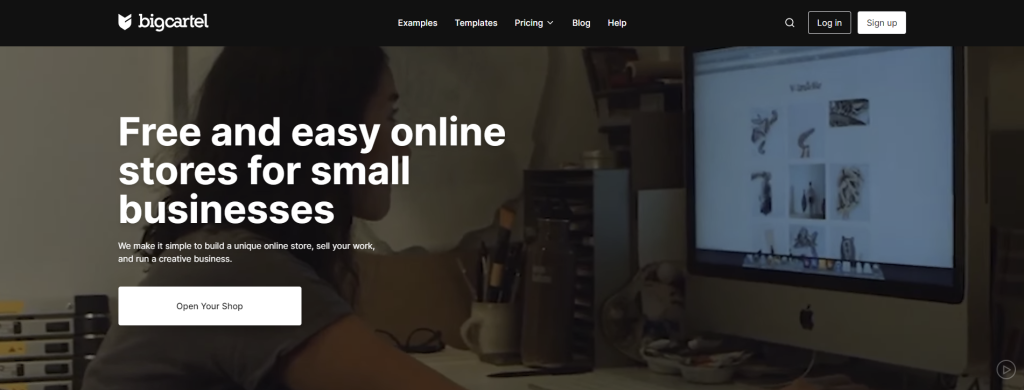
Big Cartel caters to independent sellers wanting to make money online within the creative industry. The onboarding flow is user-friendly for people without web development experience, featuring pre-built templates and a point-and-click editor to simplify store design tasks.
Sellers can accept payments through Stripe and PayPal or in person using the platform’s app in person. The platform has no transaction fees, making it exceptionally budget-friendly if used alongside the free plan.
Both free and paid plans offer access to free templates, automated sales tax for stores selling in USD, and product import from Etsy, Squarespace, and Shopify. However, support is available only during regular business hours if you’re not on the highest-tier plan.
Regarding performance, the hosted eCommerce platform stands out as one of the best on this list. Our tests showed an average page load time of 2.3 seconds, with the main content loading just around one second. Two out of three Big Cartel websites we tested scored A on GTmetrix.
Big Cartel offers SEO tools to boost website rankings further. It automatically generates a robots.txt file and a sitemap for easier crawling. Unfortunately, you can’t change meta descriptions for existing product pages.
Pros
- Free templates. Both free and paid users can access the same template library.
- Subscription feature. Offer tiered packages for customers making recurring payments or donations. Note that this feature is still in beta and needs a paid plan and Stripe to work.
- Fast performance. Big Cartel is one of the fastest eCommerce platforms in the industry. Since it’s a hosted platform, users can accomplish this without needing to perform extra optimization tasks for their store.
Cons
- Limited payment processors. Big Cartel doesn’t have a built-in payment processing system, limiting stores to accepting payments from Stripe and PayPal.
- Third-party sales support for digital products. The platform requires users to pay extra for hosting and selling downloadable items. See the pricing breakdown below for details.
Pricing
Big Cartel offers a free plan and two paid options ‒ Platinum for $12/month and Diamond for $24/month when billed annually. Platinum lets you sell up to 50 products, while Diamond increases the limit to 500, a significant increase from the free plan’s five-product limit.
Both premium plans include advanced template customization, label printing with shipping discounts, inventory tracking, and ad support. Paid users can use a custom domain and track store performance with Google Analytics.
To sell digital products, you must buy an additional Pulley plan for $6-299/month and connect it to your store. Storage ranges from 100 MB to 30 GB, each additional 10 GB costing $100/month.
Verdict
Big Cartel is a budget-friendly option for artists and small businesses just starting out or looking to sell a limited number of items. The user-friendly platform offers a simple setup process and automates back-end tasks for non-tech users and business-focused individuals.
However, Big Cartel’s limit of 500 items may hinder business growth. Additionally, it’s only suitable for countries with Stripe and PayPal support.
8. Square Online ‒ best for brick-and-mortar businesses going online
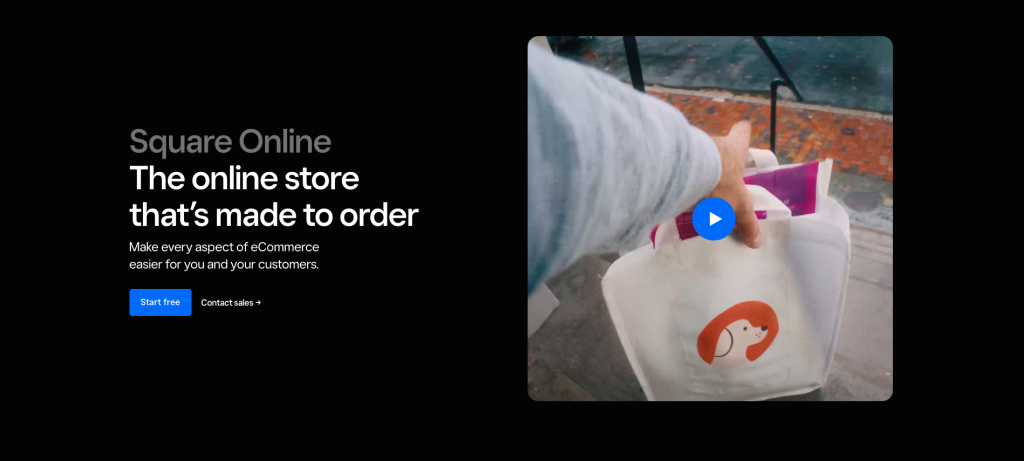
Square Online is another eCommerce platform that offers offline payment support. It integrates seamlessly with Square POS software, allowing sellers to manage online and in-person transactions from a single system.
Square Online’s drag-and-drop builder effectively helps new users set up their stores. Though not as flexible as other eCommerce solutions here, you can still match the store design to your brand by adding a custom logo and adjusting the color palette.
For order fulfillment, offline businesses can use third-party couriers for deliveries for a small fee. Square also offers up to 55% off UPS rates and allows in-house delivery using your couriers.
One of its standout features is security. Square Risk Manager, Square Online’s built-in fraud protection system, lets you identify payment fraud patterns and set custom rules and alerts to lower the risk of chargebacks.
Additionally, block suspicious IP addresses from accessing your store and enable two-factor authentication for better login security.
As for performance, two of the three Square Online websites we tested took under five seconds to fully load, with one taking over 8 seconds. Their LCPs were also similar, averaging around 1.1 seconds. None scored below C in GTmetrix, a promising result for people prioritizing performance.
Pros
- Free domain. Both paid plans include free one-year domain registration and the option to connect to a custom domain.
- Unlimited items. This perk is available for all stores, including those with a free plan.
- Social media integration. Turn social media accounts into sales channels by linking them to your Square online website.
Cons
- Additional fees. These are extra charges for online payments, in-person payments, on-demand delivery, and in-house delivery. See the pricing breakdown below for details.
- Limited customer support. 24/7 phone support is exclusive to Premium users. Users on free and Plus plans can only get assistance by phone and chat during regular business hours.
Pricing
Square Online’s free plan is ideal for new stores and small businesses. It offers unlimited item quota, online and in-person payment support, marketing tools, and standard support. However, free plan users only get three free themes and basic commerce features.
The two premium plans, Plus for $29/month and Premium for $79/month, provide 24 premium themes with more design options, a free domain, and analytics tools. They unlock gifting options, donation functionality, and advanced catalog features like subscriptions and product reviews.
Unfortunately, all users must cover transaction and delivery costs based on their current plan.
Free and Plus plans charge 2.9% + $0.30 for online transactions, while Premium is set at 2.6% + $0.30. In-person payment and on-demand delivery fees cost the same on all plans ‒ 2.6% + $0.10 and $1.50/order. Meanwhile, in-house delivery costs $0.50/order and is free for Premium users.
Verdict
Square Online offers decent value for money for businesses going online with its feature-packed free plan. However, the platform’s transaction and delivery fees can add up as you make more sales, which may not be ideal in the long run.
9. OpenCart ‒ built for global selling
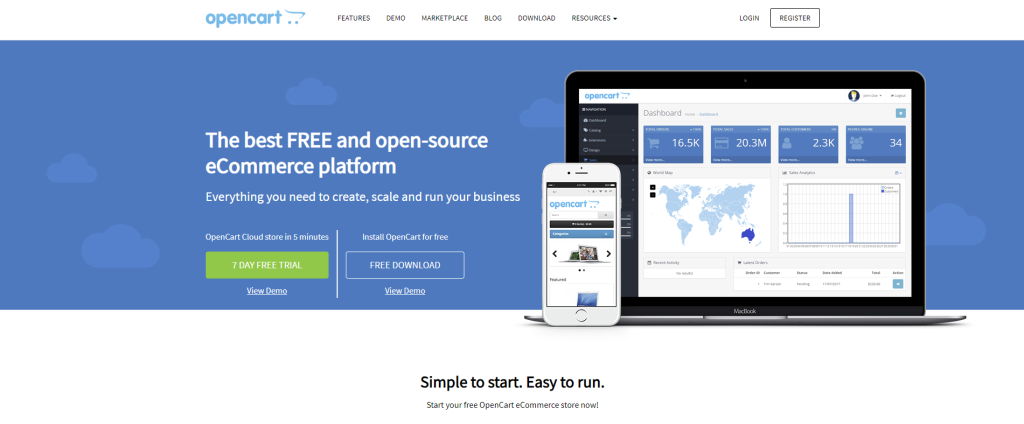
OpenCart is one of the most popular open-source eCommerce platforms, along with WooCommerce and Magento. It uses modules for customization and functionality, allowing users to create an eCommerce site tailored to their needs.
This platform stands out with its built-in features for global selling. It easily accepts international payments with 36 payment gateways and multi-currency support. It’s also translatable to over 40 languages, including right-to-left ones.
Stores selling physical products can broaden their customer base using OpenCart’s wide range of built-in and module-based shipping methods. Alternatively, they can use the platform to sell digital products or subscriptions for recurring payments.
As a self-hosted platform, OpenCart’s website performance depends on your chosen web hosting. Our tests reflected the importance of selecting the right hosting, as only one of three websites fully loaded in under 4 seconds. The LCP ranged between 2-4 seconds.
Pros
- Built-in affiliate system. Commission people to boost traffic to your store and promote your brand. The platform allows commission payments via cheque, PayPal, or bank transfer.
- Multi-store support. Manage multiple store settings and inventories from a single admin dashboard. Each store can have a unique theme for a personalized customer experience.
- Guest checkout. Allow customers to shop without creating an account.
Cons
- No built-in bulk editing. Stores with extensive inventories must install a bulk editing module to improve workflow.
- Highly technical. Unless you’re on OpenCart Cloud, module installation and core software updates require some technical skills.
Pricing
OpenCart’s widely recognized open-source version is free to download and use. Since it’s self-hosted, you only need reliable web hosting and a domain name to get started.
With Hostinger’s OpenCart hosting plan, starting at RM23.99/month, you can install OpenCart with just a few clicks as a VPS template.
OpenCart Cloud, the platform’s hosted version, offers three plans ranging from $99–229/month. Hosted on Amazon Web Services servers, it caters to non-tech-savvy users by streamlining store setup and module and theme installation. All plans include a seven-day free trial.
Both OpenCart versions have no transaction fees, so you can invest more in hosting, store functions, and design. Premium modules and themes start at $5 and $25, respectively.
Verdict
OpenCart’s global multi-store selling features make it an ideal option for eCommerce stores eyeing international markets. However, manually setting up and customizing it may appear more challenging compared to other platforms listed here.
10. Sellfy ‒ the most creator-friendly eCommerce platform
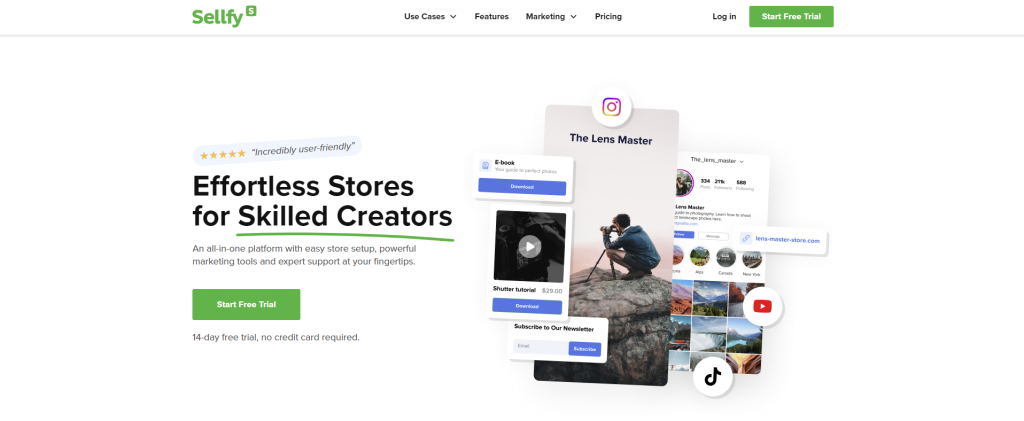
If you’re a creator looking to sell online, Sellfy is worth checking out. This niche eCommerce platform offers tools for monetizing merchandise, digital assets, and subscription-based services.
The print-on-demand service is especially handy for artists with a large following. Simply supply the design, choose the products, and set the prices, and Sellfy will take care of production and shipping.
The onboarding process is simple enough for non-technical users to follow. Pick one of the five available templates and customize the elements using its point-and-click editor.
Sellfy supports PayPal and Stripe for online payments. Boost sales with cart abandonment functionality, affiliate marketing, and email marketing. With automatic language translation, your store can cater to a global audience.
Despite its visually heavy nature, Sellfy’s websites averaged 3.9 seconds for page load time and LCP. We recommend compressing images, especially in the main content, to meet Google’s three-second standard and enhance user experience.
Pros
- Supports various product types. Sell physical and digital products, subscriptions, and print-on-demand items from one platform.
- Advanced embed features. For multi-channel marketing, showcase your store and products on any existing website, YouTube videos’ end screens, and social media accounts.
- Upselling. Offer buy-one-get-one deals and digital products bundled with merchandise to encourage sales.
Cons
- Forced branding. To remove Sellfy branding from your online store, you must be on the Business or Premium plan.
- Limited store templates. Sellfy only offers five pre-built templates for specific product types. It also doesn’t have a drag-and-drop editor or advanced customization options like most eCommerce platforms listed here.
Pricing
Sellfy has three premium plans ‒ Starter for $22/month, Business for $59/month, and Premium for $119/month when billed annually. Paying for two years at once gives you a better deal.
While there’s no free plan, new users can try out features risk-free with its 14-day free trial and 30-day money-back guarantee.
Like BigCommerce, Sellfy limits each store’s sales volume for every plan in the last 12 months.
The Starter plan allows up to $10,000 in annual sales, while Business increases the limit to $50,000. Meanwhile, the Premium plan is most suitable for businesses with a large sales volume, offering a $200,000 sales cap.
If you surpass your plan’s annual revenue, upgrade to avoid a 2% overage fee on the excess.
Additionally, Sellfy doesn’t charge transaction fees. Sellers only pay processor fees for transactions through PayPal or Stripe, the platform’s supported payment processors.
Verdict
Sellfy offers a range of marketing and commerce tools suitable for small to medium businesses. However, the sales volume limit on each plan can be a drawback for stores with high sales volumes. The limited templates and customization options might restrict your ability to design your ideal store.
How to choose the best eCommerce platform for your project
If you’re still unsure, consider the following factors in your research to narrow down your options.
Identify your business needs
Every eCommerce platform caters to specific business needs and demographics, so choose based on your own use case.
Ask yourself these questions to identify key features for your online store:
- Will your products be physical, digital, or a mix of both?
- How large is your inventory?
- What are your target market’s preferred languages, currencies, and payment methods?
- What marketing strategies will you use?
- How do you plan to handle shipping?
- Are there specific analytics and reporting features you require?
- Do you anticipate significant growth in traffic and sales?
Pick the one you can operate
Unless you hire a developer, your online store will only be as good as your understanding of the platform. That’s why picking the one with an intuitive interface and user-friendly features is crucial.
If you’re not as tech-savvy, consider platforms with drag-and-drop builders and simple customization tools. This allows you to set up and manage your store without requiring extensive technical knowledge.
Consider customizability and scalability
Customizability and scalability often depend on whether the platform is Software as a Service (SaaS) or open-source.
SaaS platforms like Shopify and BigCommerce provide built-in hosting, security, and support through tiered pricing structures. These platforms have all the tools and features you need in one place, making them easy to use and ideal for beginners.
However, due to their closed environment, they offer less flexibility in customization. Integrating third-party tools may have limitations and extra fees.
In contrast, open-source platforms like WooCommerce and Magento give users complete control over their store’s customization and scalability. While handling hosting, security, and updates yourself might require more technical knowledge and effort, you get extensive modification options in return.
Regardless of your preferences, ensure your chosen platform has all the core eCommerce features you need and the ability to grow with your business.
Check the supported payment methods
Offering several payment options can improve the overall shopping experience and expand your customer reach. A good eCommerce platform should support popular payment gateways and processors for online transactions.
If you sell internationally, look for platforms that support multiple currencies and regional payment methods. The same applies to offline payment support, as not all platforms can handle in-person payments.
Be aware of transaction fees and integration costs with different payment gateways, as these can affect your profits.
Most importantly, ensure the platform complies with the Payment Card Industry Data Security Standard (PCI DSS) to protect customers’ payment information and maintain their trust. Meeting these requirements helps safeguard sensitive data and reduce the risk of security breaches.
Evaluate customer support quality
Look for platforms that offer multiple support channels, such as live chat, email, phone support, and a comprehensive knowledge base. Having 24/7 support is ideal, especially if you operate in different time zones or have customers worldwide.
The quality of support is just as important as its responsiveness. Check user reviews and testimonials to get an idea of how well the platform’s support team assists customers and resolves issues.
Responsive and knowledgeable customer support can ease your store setup and reduce downtimes, positively impacting your sales and user experience.
Verify access to SEO and marketing tools
Having access to robust SEO and marketing tools is crucial for driving traffic to your store and increasing sales.
Choose an eCommerce platform with built-in SEO features like customizable meta tags, sitemaps, and clean URLs. This allows you to implement the best SEO practices on your website without relying on third-party tools.
The same applies to marketing tools. You should be able to create email marketing campaigns, integrate with social media, and analyze marketing performance for better decision-making.
Features like discount codes, abandoned cart recovery, and customer segmentation can also enhance your marketing strategy. For content marketing, look for platforms that support blogging.
Find the best value for money
Consider the long-term costs when looking for the best eCommerce platform for your business. Start by picking several platforms or plans that suit your needs, then compare their features and expenses.
SaaS eCommerce platforms usually charge monthly or yearly subscription fees. With free and open-source platforms, you need to buy a hosting service and domain name, along with their renewal fees.
Remember to account for additional costs like marketplace integrations, themes, or extensions.
The key is to plan your budget and stick to it. Avoid overspending on features you may not need, especially when you’re just starting out.
Conclusion
Making money online is now more straightforward with eCommerce platforms. With numerous options available, choosing the right one for your business’ size and needs is crucial.
Here are our top eCommerce platform picks to narrow down your options:
- WooCommerce. Highly scalable and adaptable to different business types, niches, and sizes, all thanks to its vast plugin library and WordPress’ self-hosted nature.
- Hostinger Website Builder. Provides an AI-powered website setup, perfect for newcomers and people wanting to kick-start online business quickly.
- Magento. Equipped with all the advanced features for large-scale businesses, including B2B companies.
We hope this article will help you find the right eCommerce solution to grow your business and make money online. If you have any questions, check out the FAQ section or leave a comment below.
Best eCommerce platforms FAQ
What is the best eCommerce platform for beginners?
Hostinger Website Builder’s range of AI tools and templates allows beginners to build a website quickly and easily. Other great options include WooCommerce for its extensive tutorials and Shopify for an all-in-one eCommerce solution.
How much does an eCommerce platform cost?
The cost of an eCommerce platform varies based on pricing plans, transaction fees, and add-ons like plugins and templates. For example, Hostinger Website Builder’s plans include templates and features, while WooCommerce offers paid themes and plugins to consider when budgeting.
What is the easiest eCommerce site to use?
Hosted eCommerce platforms are more beginner-friendly than CMSs, consolidating all the necessary features in one place. However, Hostinger Website Builder takes it further by integrating AI tools into web development. Non-tech-savvy users can quickly master its features and launch their first website in minutes.
What is the fastest eCommerce platform?
Hostinger Website Builder and Big Cartel websites we tested loaded in under three seconds on average, meeting Google’s standard. Self-hosted eCommerce platforms like WooCommerce and Magento can also achieve fast load times, especially alongside high-quality hosting and proper optimization. Ultimately, your website speed depends on your hosting provider and optimization efforts.


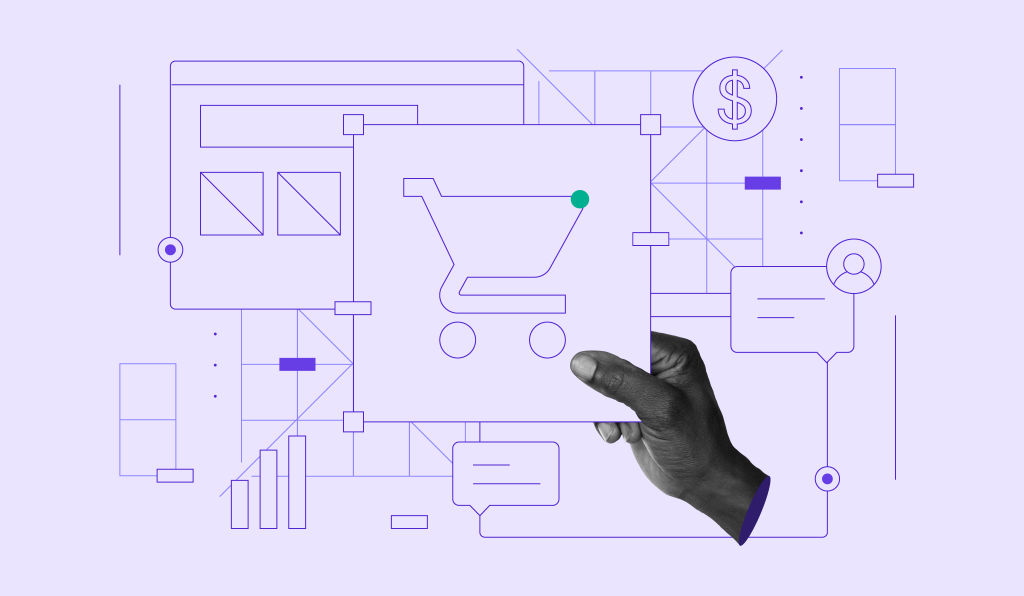

Comments
July 15 2018
Nice overview! There are surely a lot of options to pick from. I'm actually in the process of planning my first online business. Your shared hosting plans seem like a nice place to begin. What do you think is the best ecommerce platform for me? Thanks in advance!
July 15 2018
Hello, Greg. If you're just starting out, I think the combination of WordPress+WooCommerce is the best choice. It has lots of guides available and does not have a huge learning curve. You can also implement the most important features with free plugins, which is great if you're starting with a smaller budget. If you have any more questions, just drop me another line! ;)
February 28 2019
Most of sites like superfinedeal use woocommerce, Easy to use and customize. Shopify is my second best choice. As per your Description, I am sure rest of three E commerce Platforms also very good.
September 23 2020
Hi Darren, I currently sell gadgets items on Facebook Marketplace and now I want to open an e-commerce store to increase my sales and extend my business. but I couldn't decide which platform will be best for me. Could you recommend something specific?
November 18 2020
Hey Fred. That would really depend on the size of your business, but I would definitely recommend either Zyro eCommerce or Woocommerce. These are up there for a reason, and both Zyro's and Hostinger's WordPress plans scale with your needs, so you can chose the plan that suits your needs.